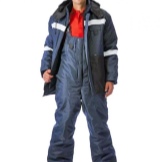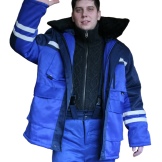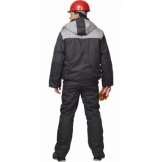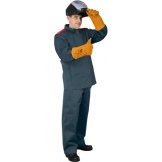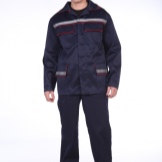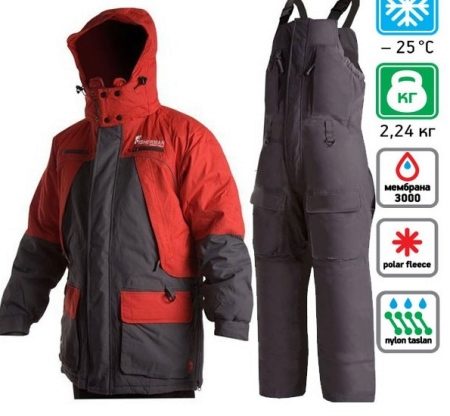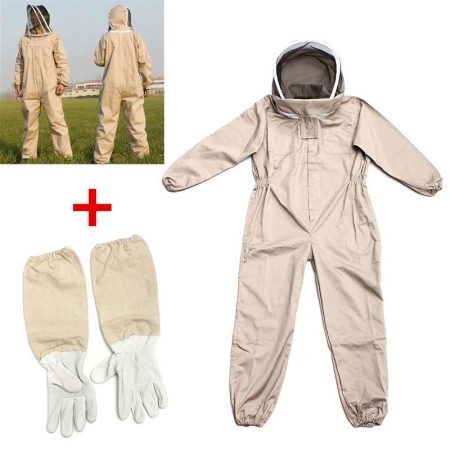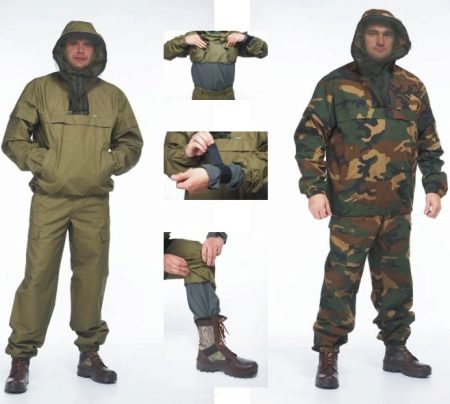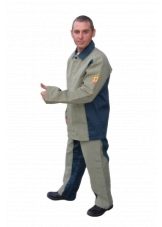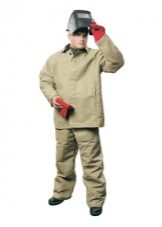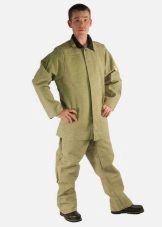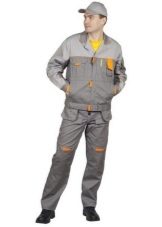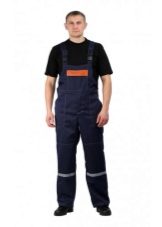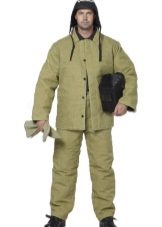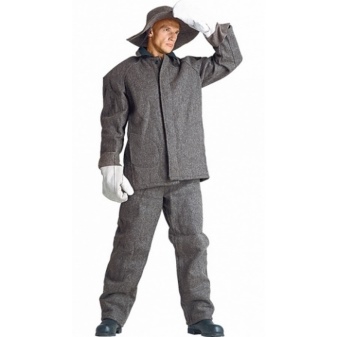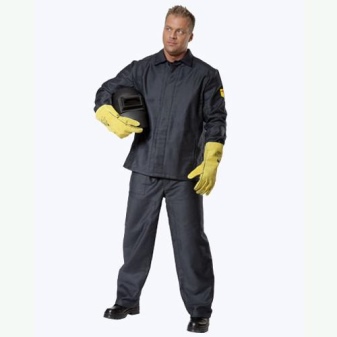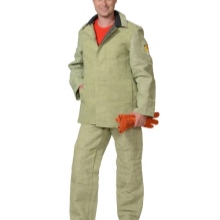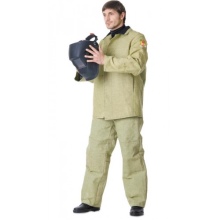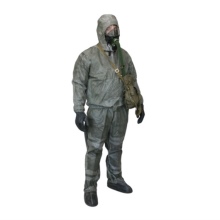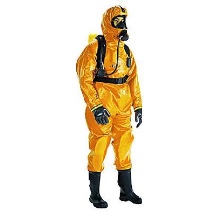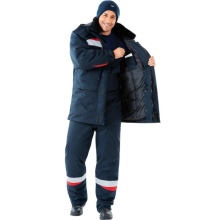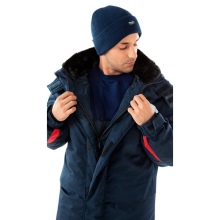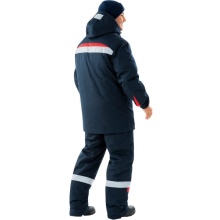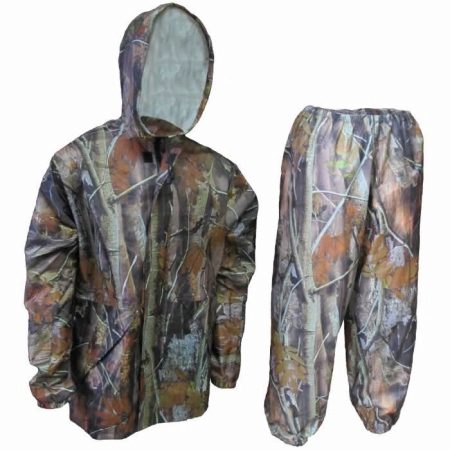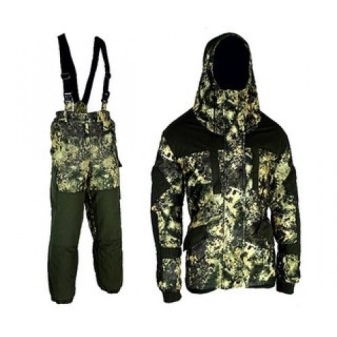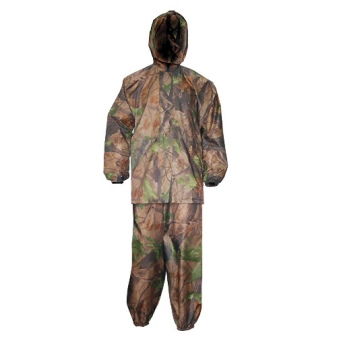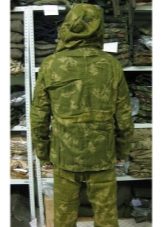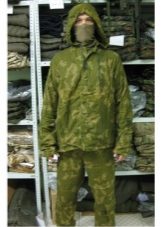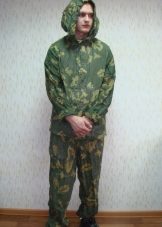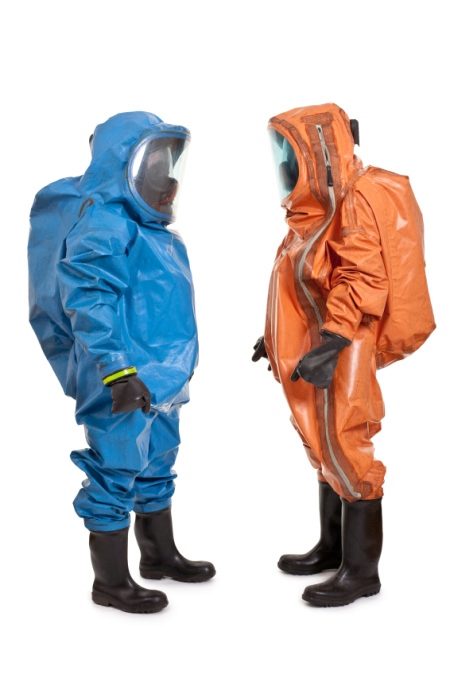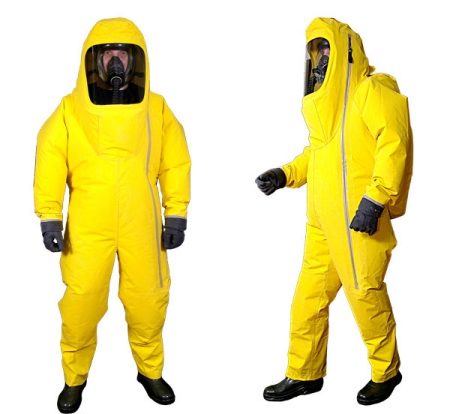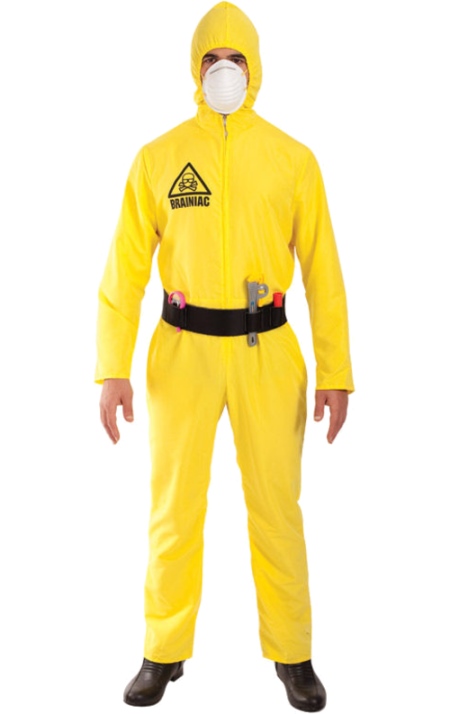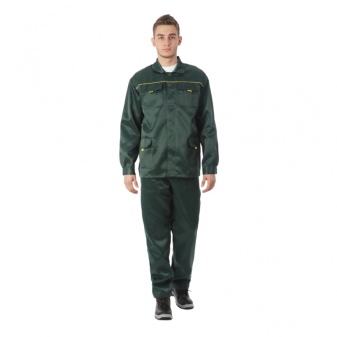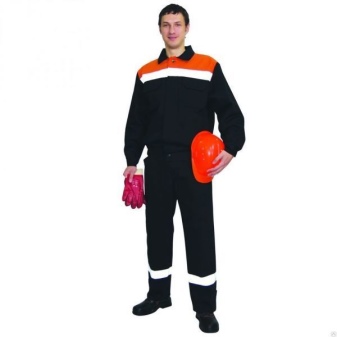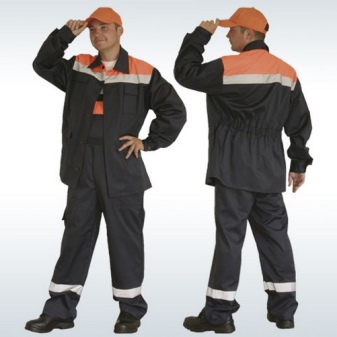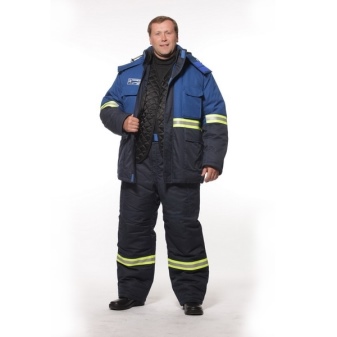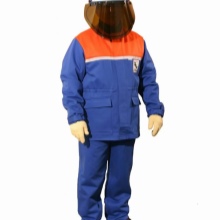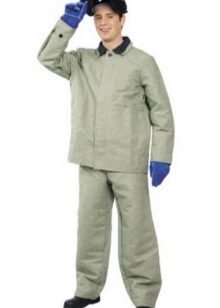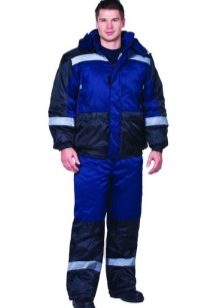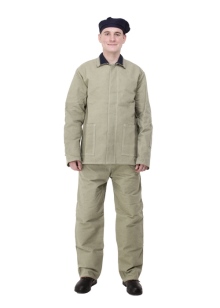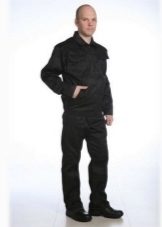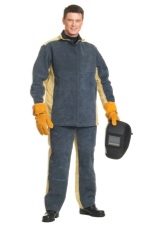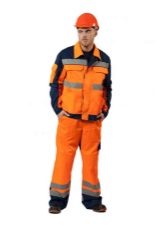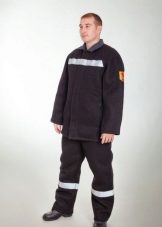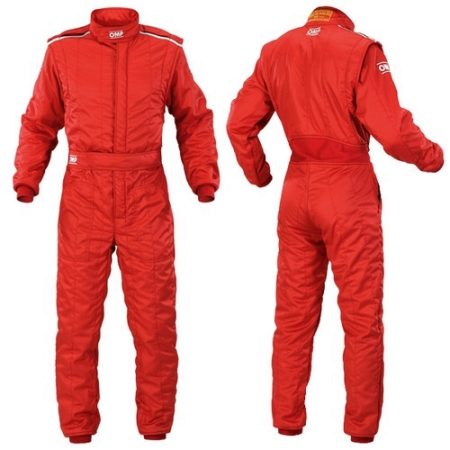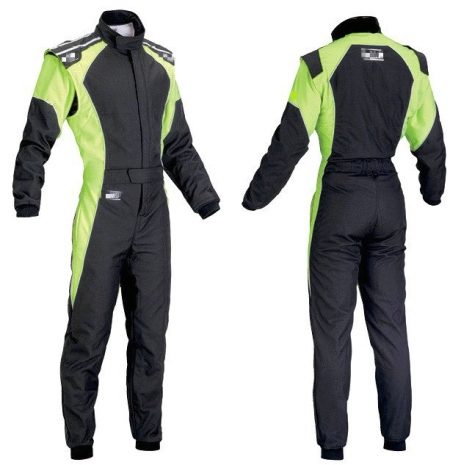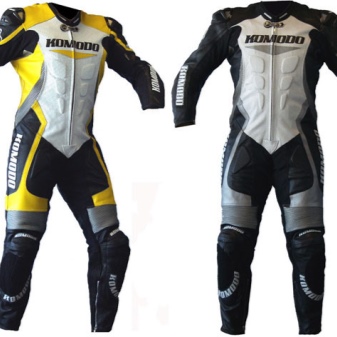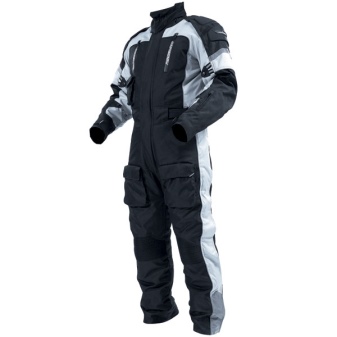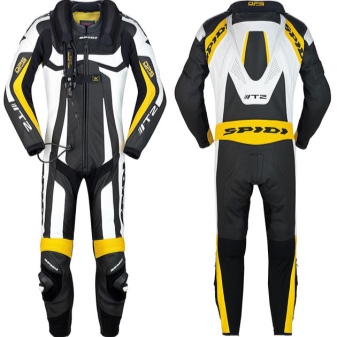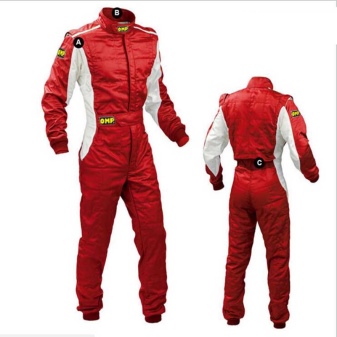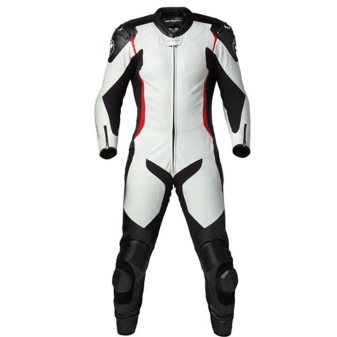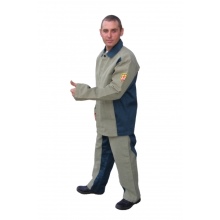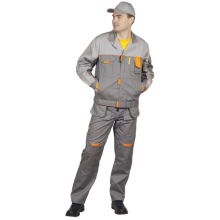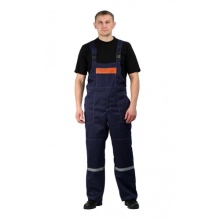Protective men's suit
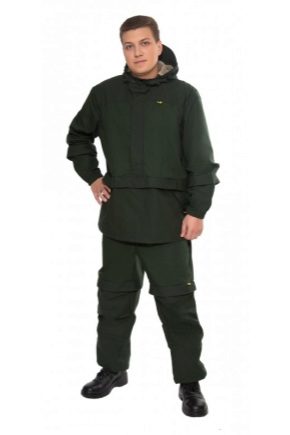
A number of professions are associated with daily risk due to specific working conditions - with chemistry or in difficult conditions. Here it is important to comply with the requirements of individual safety, and professional protective suits help reduce risks and protect people from dangerous factors.
Features and Purpose
A protective suit may be needed in working with chemicals (disinfection, disinsection, etc.), under conditions of possible radiation, as well as when you need to reduce the open body area, isolate a person from the external environment (fire suits, electricians). Sometimes it is required to “single out” a person, to make it noticeable in different conditions.
To such clothes are high requirements for durability. It is made taking into account scientific developments, supplemented with impregnations, it consists of resistant fibers that do not react with chemical reagents, often they are combined with reinforced filaments.
Suits for protection, depending on the purpose, are different tasks - to isolate the human body or filter the air (environment), without missing dangerous reagents and substances.
Suits for protection, depending on the purpose, are different tasks - to isolate the human body or filter the air (environment), without missing dangerous reagents and substances.
Protection classes
Since the purpose of protective suits is different, they are assigned classes in accordance with the laws (GOST 12.4.011-89), and they should cover the skin of a person as much as possible. Depending on the kit, there is a protective suit (pants and jacket), protective overalls and a light protective suit. These sets often include shoes, a helmet and mittens.
Protection classes may depend not only on permeability and contact, they are assigned depending on the temperature "resistance", as well as on working conditions.
- 1 class of protection - the minimum recommended level
- Grade 2 makes it possible to work under normal conditions
- Grade 3 protects when working in difficult conditions.
Types of protection
From elevated temperatures
Such protective suits are chosen for employees of the fire service, MOE. Protection against overheating and external heat is provided by the layered suit, special fabrics and surface impregnation. It is necessary to use heat-reflecting matter, in the suit TOK-200 it is used as the outer layer of clothing, in others - inside the layers. However, the fabrics are used lightweight to ensure fast and maneuverable work, as in the BOP-1. Such materials provide protection against acids, alkalis, dust and other hazards.
Fire suits have a special design: enhanced protection of the head and neck, arms and legs. Face protection and visibility is provided by a fireproof transparent screen.
Chemical protection
At the enterprises of the chemical, oil producing and processing industries there are special suits for work in case of an accident, the filling of reagents and hazardous substances. They served as a prototype for the OZK (combined-arms protective kit) - a relatively lightweight suit made of rubberized insulating material, which included gloves, boots, gas mask. If the troops use camouflage-colored suits, choosing the style according to their needs - a jumpsuit or a raincoat, then enterprises often choose universal and light overalls of bright colors (yellow or red).
The SPACEL 3000 overalls are an example of a lightweight chemical resistant to various substances.It is worn over working clothes, but it does not provide long-term protection. But for a long work more suitable METHANOL, KIH. These models are airtight, resistant to substances in the air, as well as liquid, caustic and poisonous vapors. Tight fit provides cuffs with elastic bands, and respiratory protection - gas masks.
Angara
Protective suit from low temperatures - the most necessary clothing in a harsh cold climate. The hangar is made of natural and synthetic materials (cotton, thermofiber, polyether and others), the combination of which helps to keep warm. This suit does not trap moisture, is not blown. Dark non-staining color is practical, takes into account the wide specifics of the work, is noticeable on the snow cover. For safety during the warm time of the day reflective stripes are applied on the suit.
Wind and water protective
Employees of the fleet, fishing vessels, other sailors and fishermen also need overalls that protect them from splashes and high humidity, penetrating wind and cooling. Employees of enterprises with water bodies also need this form. Raincoats help with a short rain, but they have a raincoat design with a hood, and it is not suitable for all works, and will also impede movement in conditions of high dampness when there is no rain. For such cases, suitable universal camouflage suits VZR and KMF, they are made of durable fibers (nylon, polyester, polyester). Suits consist of a jacket and trousers, with adjustable cuffs and a bottom of jackets.
The fastener of top consists of a lightning and a protective level. Membrane suits can also be camouflaged and monotonous, they are made of insulation (from membrane cloth, with taped seams), this is an enhanced protection from wind and rain. VKBO suits (all-season set of basic uniforms) are a vivid representative of such membrane variants, which are designed for a wide range of temperatures - from 0 to 20 ° С and a long stay under heavy rain. Durable, practical and non-marking, on the cuffs and drawstring - a popular choice of professionals!
Forward offers clothing for athletes: it retains heat and protects from rain and wind during outdoor workouts, allowing you to move freely and actively. The costumes are bright, light, beautiful and comfortable. They are made using rip-stop webs and the development of a fabric processing company and impregnating and gluing seams.
The company Tyvek offers waterproof suits of nylon and PVC. They can protect employees from exposure to chemicals, acids, sprayed into the air. This makes suits indispensable in the chemical industry.
Poseidon is designed to work outdoors in conditions of high humidity: sleeves with an inner cuff, a windscreen on the jacket, an exterior material with PVC, sealed, glued seams and a heat-insulated lining.
KZS net
Camouflage protective suit is worn over clothing. It consists of trousers and a jacket with a big hood. It can be used by both hunters and the military, it is light and supplied with refractory impregnation. The suit is used for camouflage.
Radiation
When working in contaminated areas, special conditions are required. For protection, a special rubberized fabric is used, which acts as a barrier and reduces the effect on the body.
The easiest option is the L-1 lightweight protective suit, which replaces the Korund-2 kit.
It is made from a softer and more elastic fabric. Arms are better adjustable and fit more tightly to the body. The suit is supplemented with a gas mask. It sits on top of seasonal clothing and can withstand drops from -40 ° C to + 40 ° C.
Biological
These costumes are used by health workers. They are notable for their lightness, additional protection of the respiratory organs and special density of materials in order to isolate a person and prevent skin contact with infection. KVIM (an infectious disease doctor's costume) and the Quartz anti-plague costume are widely known.Suits are worn over clothes; they protect hands, face, neck, and provide gas masks with interchangeable boxes for working in different conditions.
The kit KVIM has replaceable gloves for simple work and for high-precision manipulations. "Quartz" is used to work in laboratories with dangerous and poorly understood viruses and bacteria. It has higher requirements for insulation and filtration of outside air.
From general industrial pollution
For dirty and dusty work, high-quality costumes are also needed: they protect clothing and body from dirt, are easy to wash and are designed for long-term use.
Most often they are made of propylene, creating straight silhouettes.
Often it is light overalls with a hood. They are complemented by gloves, shoe covers and respirators.
From electric arc
Protection from electrical discharge give suits made of BANWEAR material (cotton + nylon). Such suits have their seasonality (summer-winter), different processing depending on the class of protection. Such clothes are required for welders, electricians, electricians, test engineers. Suits (pants or semi-overalls and a jacket) reduce the risk of work and can save employees.
With flame retardant impregnation
Fire retardant impregnation is often used in protective suits. The basis is treated cotton, moleskin, flameshild, and as impregnation - flame retardants. They can be applied to clothing immediately before use.
For motorcyclist
Features ride a motorcycle for a long time made bikers very vulnerable. If amateurs often neglect to buy a protective suit, then professional racing athletes understand that a good suit can save lives.
Traditional material is called skin, it is not blown, it creates minimal friction with air.
Modern materials - nylon, aramid fibers have the same advantages, and still create a flexible, durable frame that can protect against impact.
Costume design takes into account common types of injuries, provides protection (stiffeners, airbags, etc.).
Such motorcycle overalls help soften shocks and ensure proper heat exchange. Wear them on top of underwear or clothing.
How to wear a shorter
To work in a protective suit was comfortable, you need to follow simple rules. Costumes should be worn over linen, from -10 ° C to 15 ° C - over seasonal uniforms, a padded jacket helps to warm up below -10 ° C. As for helmets and hoods, the recommendation for the winter period - be sure to use a balaclava. Protective boots put on socks or footcloths. It is recommended to keep costumes and wear them in the shade so that they do not overheat. Maximum performance is achieved at an even pace of work.
You need to change into a protective uniform right before work, employees do it on a special team. The mode of operation in a suit takes into account the temperature and other conditions that are specified in the instructions. In cloudy weather, the work time may be longer, and its preliminary training increases.
To choose the right protective suits, you need to take into account the climate and the specifics of the work, all the factors that employees may encounter when performing their duties. And only proven stores working with manufacturers can guarantee the quality of the protective suit.

